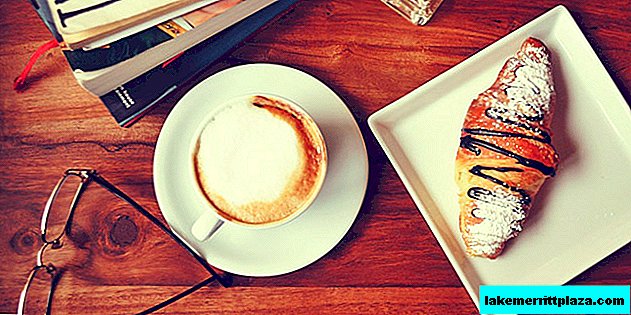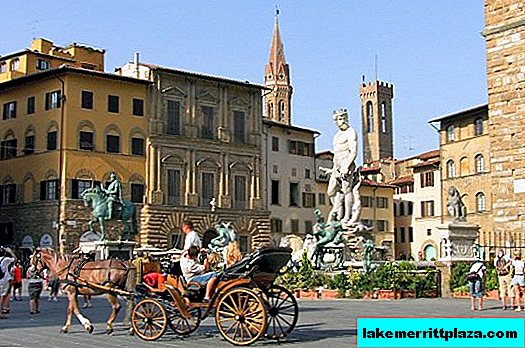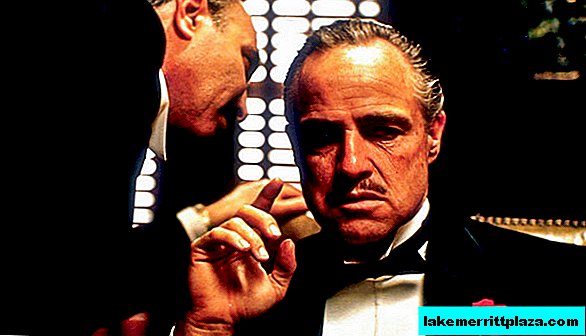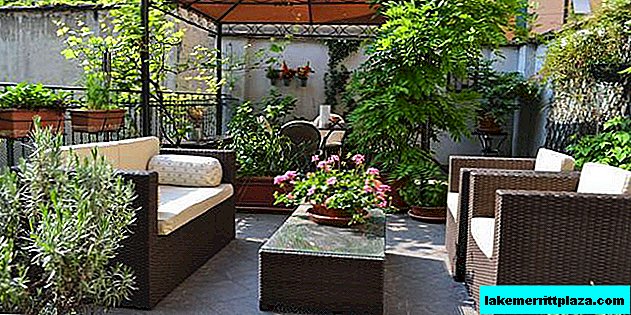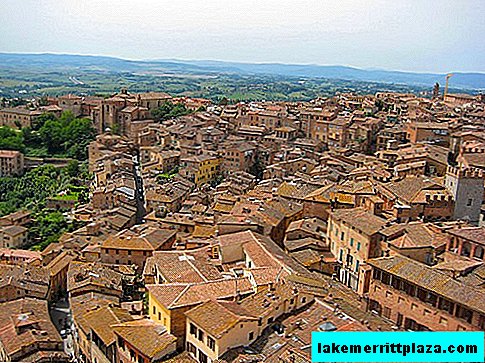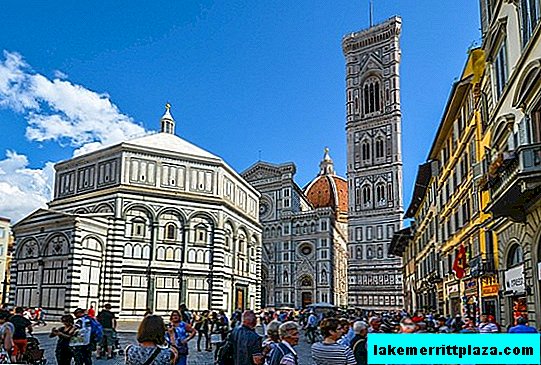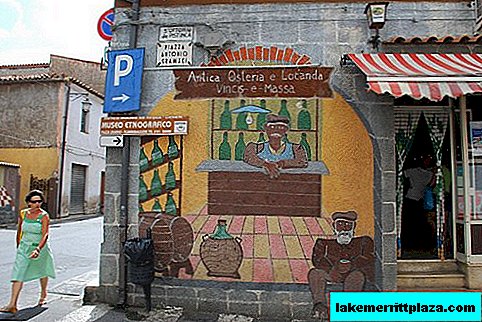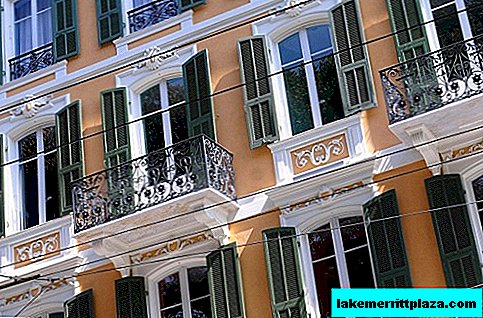Twice a year, the whole of Siena enters a feverish movement in anticipation of the main event - Palio, the famous horse racing, attracting more and more tourists every year. But the townspeople themselves have no time to rest these days. Each quarter throughout the year lives for the sake of Palio, and it is from the latest preparations that the status of the community in the eyes of neighbors and rivals depends.
In the articles on July and August in Italy, we already mentioned that every year, July 2 and August 16, Siena hosts a real medieval holiday, the culmination of which is the races on the Piazza del Campo. What is so special about them and why are they so attractive to travelers? It’s worth sorting out.
Palio in Siena: a history of victory and prohibitions
In the Middle Ages, the Apennine peninsula, the "Italian boot", was a patchwork of dukes, republics, kingdoms. Over the centuries, borders have constantly changed, cities have passed from hand to hand, entire states have arisen and disappeared. Even in the Papal region was restless.
The inhabitants of Tuscan Siena, who competed in the XIII-XIV centuries, did not know peace. with Florence, whose possessions extended almost to the city walls. But on September 4, 1260, at the Battle of Montaerti, they, who supported the emperor’s supporters (Ghibellines), managed to win a landslide victory over the Florentine Guelphs (pope supporters).
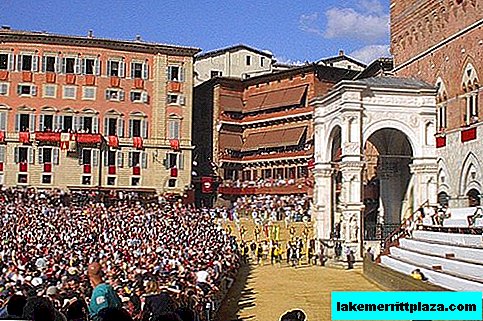
Palio traditionally held on the Piazza del Campo
Before the battle, the entire adult population of Siena took part in ceremonies in honor of the Virgin. Only the Virgin Mary, according to the townspeople, could provide worthy patronage in the struggle against Florence and other Guelph cities. After the victory in Montaperti, the first mass Siena Palio was held (from the word "palio" - a flag, a banner that is awarded to the winner). True, the main competitions were not races, but a fight with wooden swords (Elmore) between 3 territories (parts) of the city, which, in turn, were divided into 59 counters (quarters, districts). Public games that simulate fights were banned in 1291 after a particularly sad ending that ruined one of the city holidays. However, there were no prohibitions on horse or bull races, on-road racing and other competitions.
Historians believe that horse racing in Siena as the main action began to be held in honor of major holidays already from 1310. In the XVI century. the townspeople were carried away by bullfighting, and after its ban by Ferdinand I the Medici in 1590, the Siena races again came to the fore. They were held at the Piazza del Campo. At first it was horse racing, then - on the buffalo. After several serious injuries in 1650, they were banned.
For the first time, the Palio in Siena in the modern sense - horseback riding - took place on July 2, 1656. By that time, the city was divided into 20 counters competing with each other. Currently, there are only 17 counters that bear funny names for the uninitiated (for example, Turtles, Snails, Porcupine, Elephant, Owl, Forest and even Baran Valley).
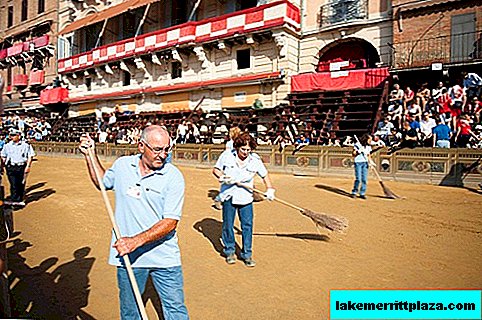
So that the horses do not damage the hooves, the area is rammed with ground
Each of the quarters has its own emblem, flag, motto, color, temple. And the Siena Palio is now held 2 times a year - on July 2 in honor of the church of Santa Maria di Provenzano, built on a wonderful place, and on August 16 - in honor of Ferragosto (Assumption of the Virgin). So the Sienans still rely on the help of the Virgin Mary, going to competitions that mimic real feudal battles.
Palio in Siena: a modern perspective
The life of the city’s true patriots is divided into 3 periods: before the Palio in Siena, during and after the Palio. Since the competition is dedicated to the Mother of God, official bets on the victory of a particular contra are prohibited. But the format of the Siena Palio - horseback riding on rough terrain (the area is shell-shaped, the treadmill - ups and downs almost at right angles) - implies that the fight will be serious.
Horse racing in Siena usually lasts no more than 1.5 minutes. However, in the process of preparing for them, each contrast re-shakes its costumes with the colors of its flag, rehearses the ceremony of solemn processions on the eve and on the day of Palio and re-develops a strategy for the behavior of a jockey and horse at a distance. The distance is 1 km or 3 laps around the perimeter of the Piazza del Campo. So that the horses do not immediately damage the hooves, the famous Siena earth is brought to the square brownish-yellow in color, which is sprinkled with sand from above, and then rammed.
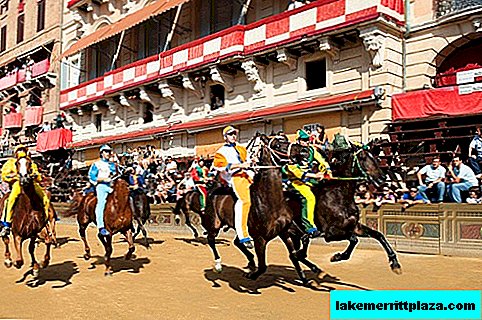
Palio in Siena - a real medieval holiday
In terms of strategy, at first glance, everything is clear: to stay on the horse and, clutching the whip in his hands, not only drive the animal, but also try to disorient the opponents. This is not forbidden, but, on the contrary, is one of the rules of the race, despite the protests of the "greens" who defend the horses, which from time to time are crippled or die during the competition.
The draw, with which the 4-day holiday begins, is held on June 29 and August 13. Initially, all 17 contractions and up to 30 horses specially raised for Siena in Sardinia take part in it. Only 10 jockeys are allowed to participate in the races: 7 not involved in the past Palio and 3 from among the remaining 10. The top 10 horses, randomly distributed, are counterattacked. On the same day, the first test run takes place on the square. To stop attempts to bribe jockeys, usually not native to Siena, 12 men from different counters have been watching them and horses since the draw.
In the next 2 days, there are more and more tourists in the city, trial runs continue to be held, and dress rehearsals of processions are also held. After the training races, concerts are taking place in Piazza del Campo. The degree of fun in the city is steadily increasing: each counter in its territory organizes a banquet in support of its jockey and its horse or in support of its allies, if this time you take part in Palio in Siena will fail. Drummers in medieval costumes march through the streets of the city, announcing the approaching culmination of the holiday.
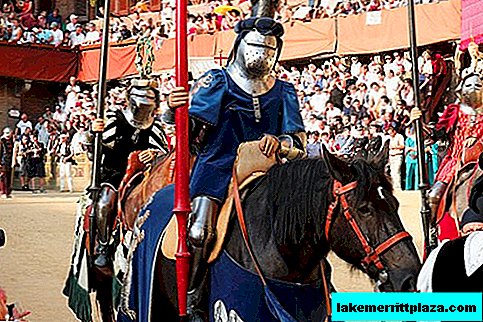
The festival begins with a colorful procession - Corteo Storico
Palio in Siena: the culmination of the holiday
According to rough estimates, this action takes place in the presence of from 40 to 70 thousand spectators. The festival begins after 16:00 (all approaches to the square had already been blocked by that time) with a colorful solemn procession - Corteo Storico. Hundreds of representatives of all the counterparts dressed in medieval costumes take part in it. Moreover, the costumes are made of authentic fabrics: no synthetics and faux fur. The standard bearers carry flags with the emblems of each of the counters, competing with each other in the ability to handle the pole and the cloth. The cart, pulled by bulls, carrying a prize - Palio closes the procession, for the honor to decorate which the most famous artists compete every year. All this time, on the main tower of Siena, without stopping, the bell beats.
After possible false starts, the horses line up: 9 in front and 1 in the back. As soon as the 10th horse reaches the space between the two ropes, the front rope instantly falls and the races begin. During the race, not only animals, but also jockeys can suffer. However, if a horse without a jockey comes first, victory will be awarded to her. Such cases have already happened. True, in the overall standings such a victory gives not 1, but 0.5 points.
After the races in Siena are completed, the precious Palio is awarded to the winner, his name is entered in a special commemorative book, and the counterpart, whose interests he represented, arranges a festive banquet in the square, in which thousands of people participate.
Palio Tickets
In the days when there are races, there are no empty seats in the hotels of the city. In the stands bordering the area where tickets are sold, there are no unoccupied seats either. Windows, roofs, parapets, balconies are rented out these days at fabulous prices, which are becoming higher every hour.
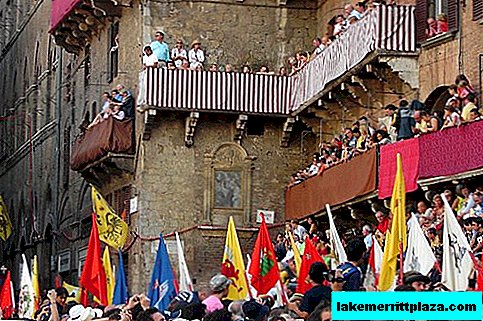
In the days of the Palio even windows overlooking the Piazza del Campo are surrendered
Free can be accommodated only in the center of the square. But people flock there too, starting in the early morning. And the races themselves start at 19:30 in July and at 19:00 in August, and false starts are frequent, because of which they can start an hour and a half later. The prospect for those who have to spend the whole day in the crowd under the scorching sun of Tuscany is not the most rosy one. But if it was not possible to get tickets on time, there is no other alternative.
To avoid the crush in the center of the square and have time to book Palio tickets to Siena, you can use the SelectItaly service. Moreover, the site offers tickets to the stands and balconies, protected from the sun, from which the whole area is perfectly visible, even experts in architecture say that the Piazza del Campo is designed so that at any point you can see at least the edge of the treadmill .
Well, besides this, which few people know about, you can even get a whole Palio tour here, including not only tickets for the competition, but also accommodation in a local hotel, a tour of Siena and even an invitation to a banquet of one of the counters.
If you decide to go to Siena on the Palio yourself, then here's a link to a selection of hotels in the city center in the immediate vicinity of the Piazza del Campo, where, as mentioned above, the race takes place.

